Abstract
PR-879-317A (2,3,5,6,7,8-hexahydro-2-phenyl-8,8-dimethoxy-imidazo [1,2a]pyridine) has been found to be a T-cell-selective immunomodulating agent. In the current studies, a series of experiments was designed to determine the potential antiviral activity of this compound in mice infected with murine hepatitis virus. In a comparative antiviral experiment, the activity seen was superior to that of levamisole, a known immunorestorative agent. This activity was characterized by an increase in the 21-day survival frequency, a decrease in hepatic discoloration, a decrease in the amount of infectious virus recoverable from the liver, and normalization of serum glutamic oxalacetate and pyruvate transaminase levels. A comparison of treatment routes indicated the relative efficacies as intraperitoneal greater than per os greater than intramuscular greater than or equal to subcutaneous. Alteration of the treatment schedule markedly affected the antiviral effect; prophylactic or therapeutic treatments once or twice daily for 3 days were usually effective. Single treatments begun 4 h before or 24 h after virus inoculation were highly efficacious. Three treatments administered on alternate days, beginning 48 h before virus inoculation, proved moderately effective. Thrice-daily treatments were ineffective, as were treatments with durations of greater than 3 days. The optimal dosage varied according to the treatment route and dosage schedule. When assessed for direct antiviral activity in vitro, PR-879-317A failed to demonstrate any significant activity against murine hepatitis virus. The positive in vivo activity noted might therefore be the result of immune modulation rather than a direct antiviral effect.
Full text
PDF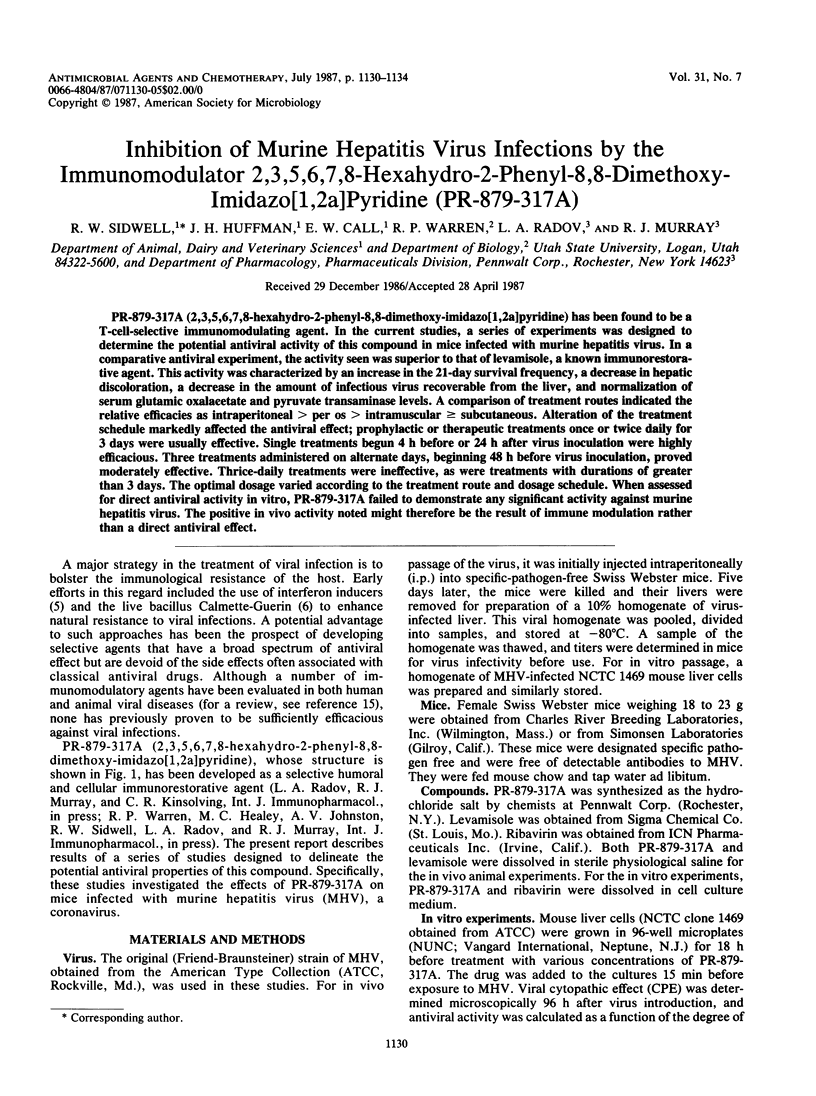
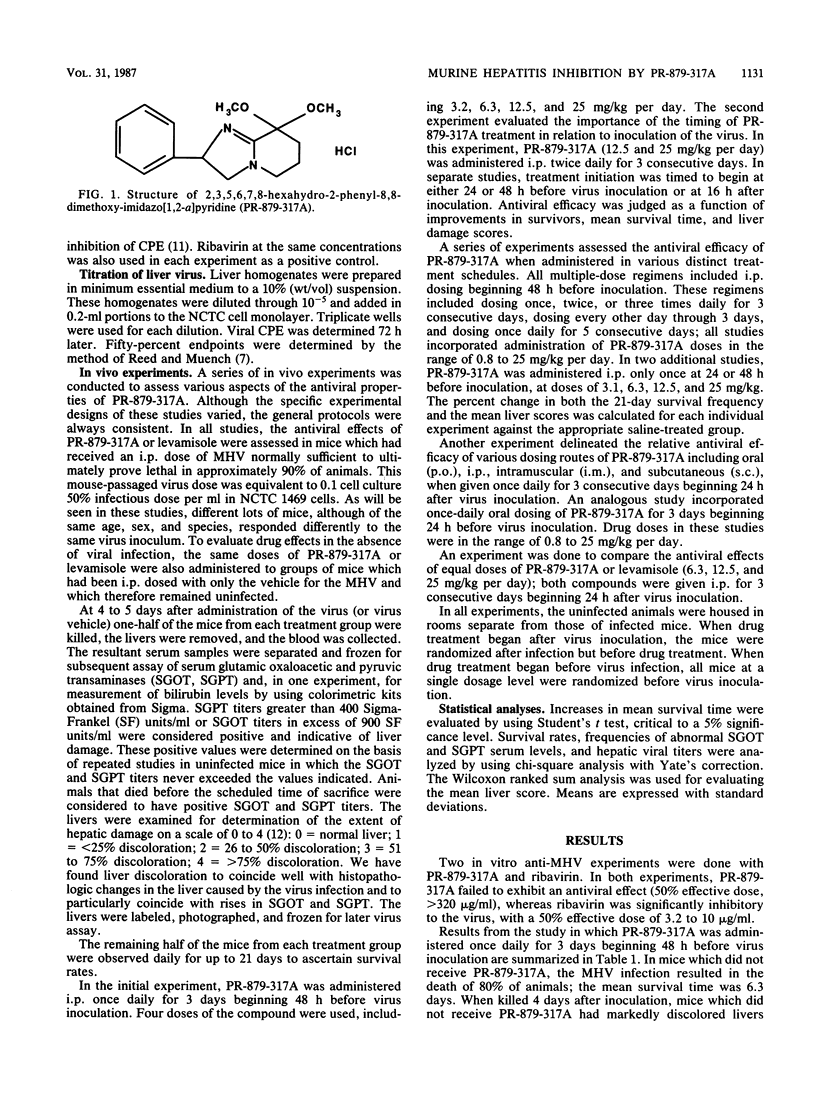
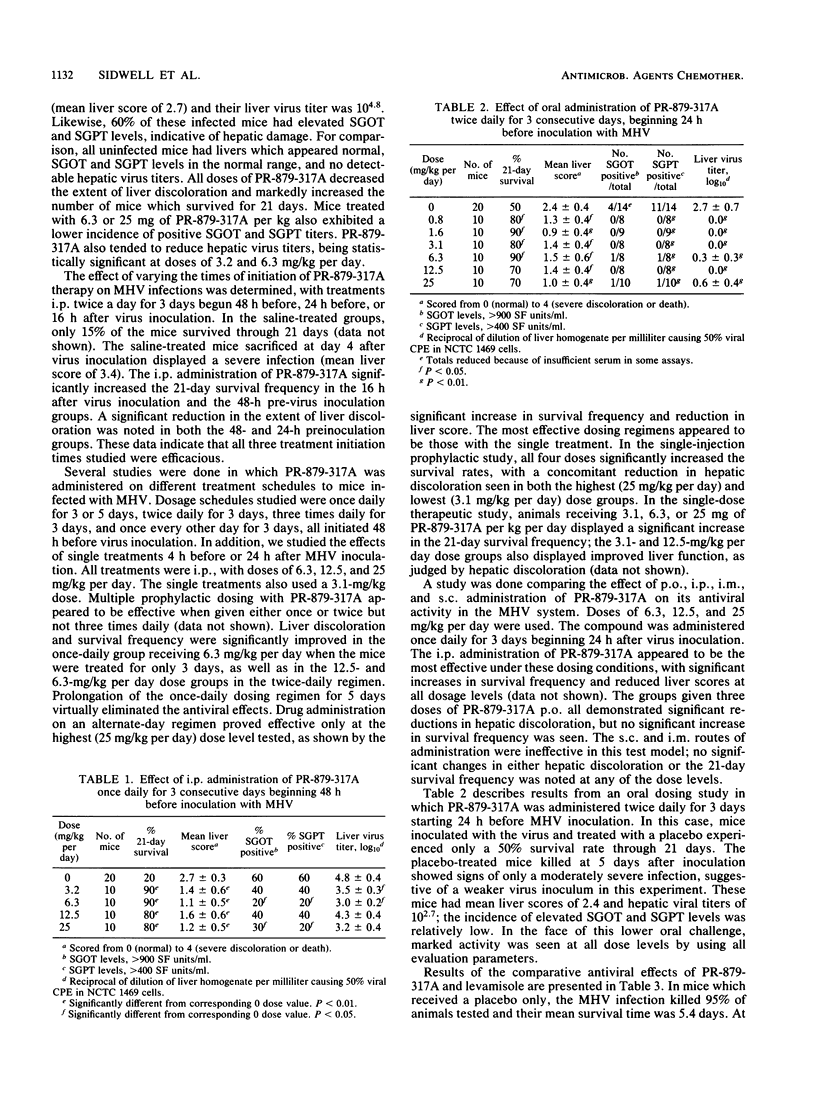
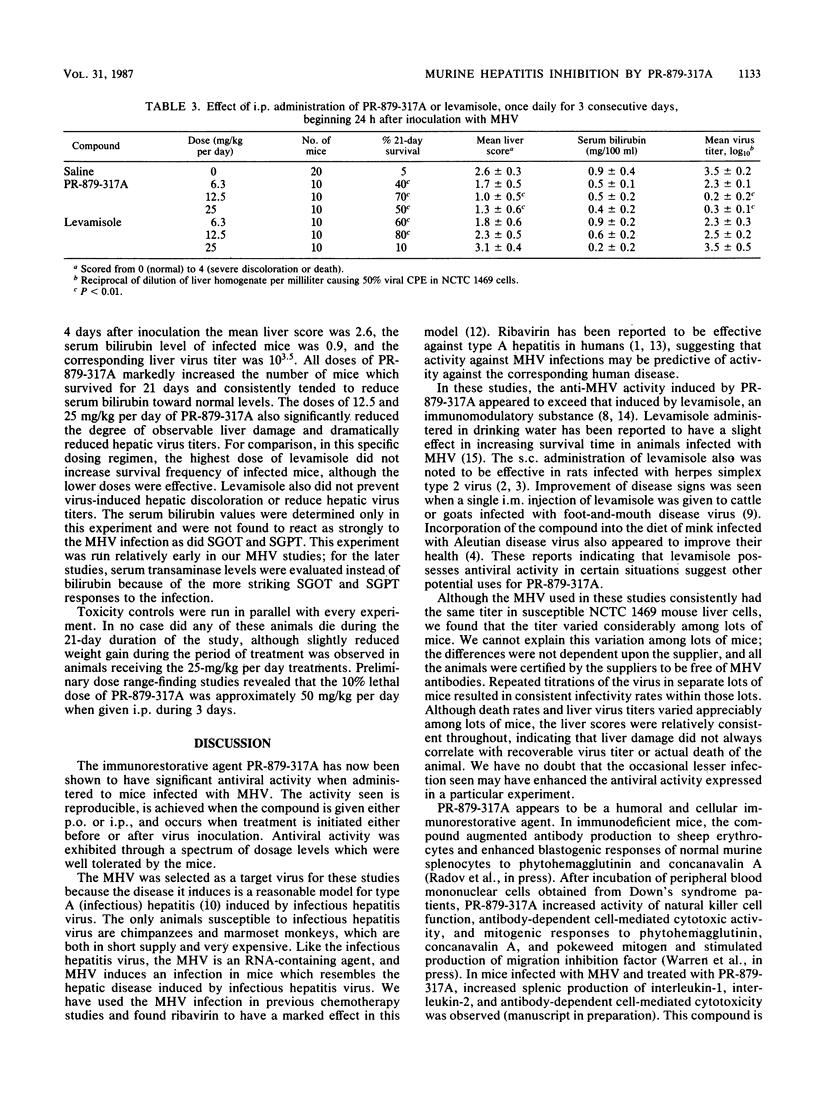
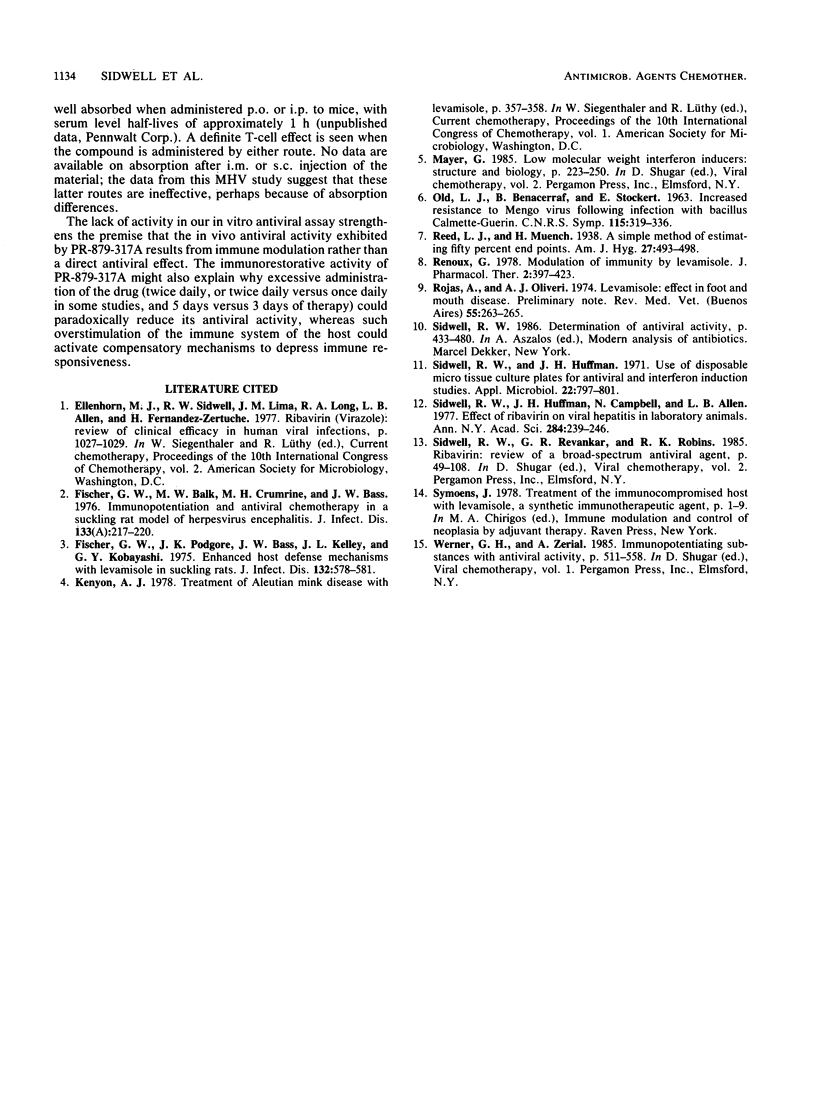
Selected References
These references are in PubMed. This may not be the complete list of references from this article.
- Fischer G. W., Podgore J. K., Bass J. W., Kelley J. L., Kobayaski G. Y. Enhanced host defense mechanisms with levamisole in suckling rats. J Infect Dis. 1975 Nov;132(5):578–581. doi: 10.1093/infdis/132.5.578. [DOI] [PubMed] [Google Scholar]
- Sidwell R. W., Huffman J. H., Campbell N., Allen L. B. Effect of ribavirin on viral hepatitis in laboratory animals. Ann N Y Acad Sci. 1977 Mar 4;284:239–246. doi: 10.1111/j.1749-6632.1977.tb21956.x. [DOI] [PMC free article] [PubMed] [Google Scholar]
- Sidwell R. W., Huffman J. H. Use of disposable micro tissue culture plates for antiviral and interferon induction studies. Appl Microbiol. 1971 Nov;22(5):797–801. doi: 10.1128/am.22.5.797-801.1971. [DOI] [PMC free article] [PubMed] [Google Scholar]


